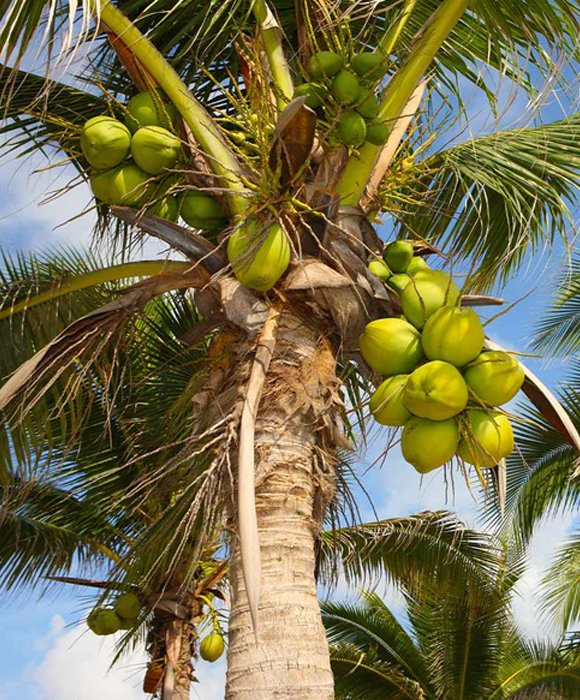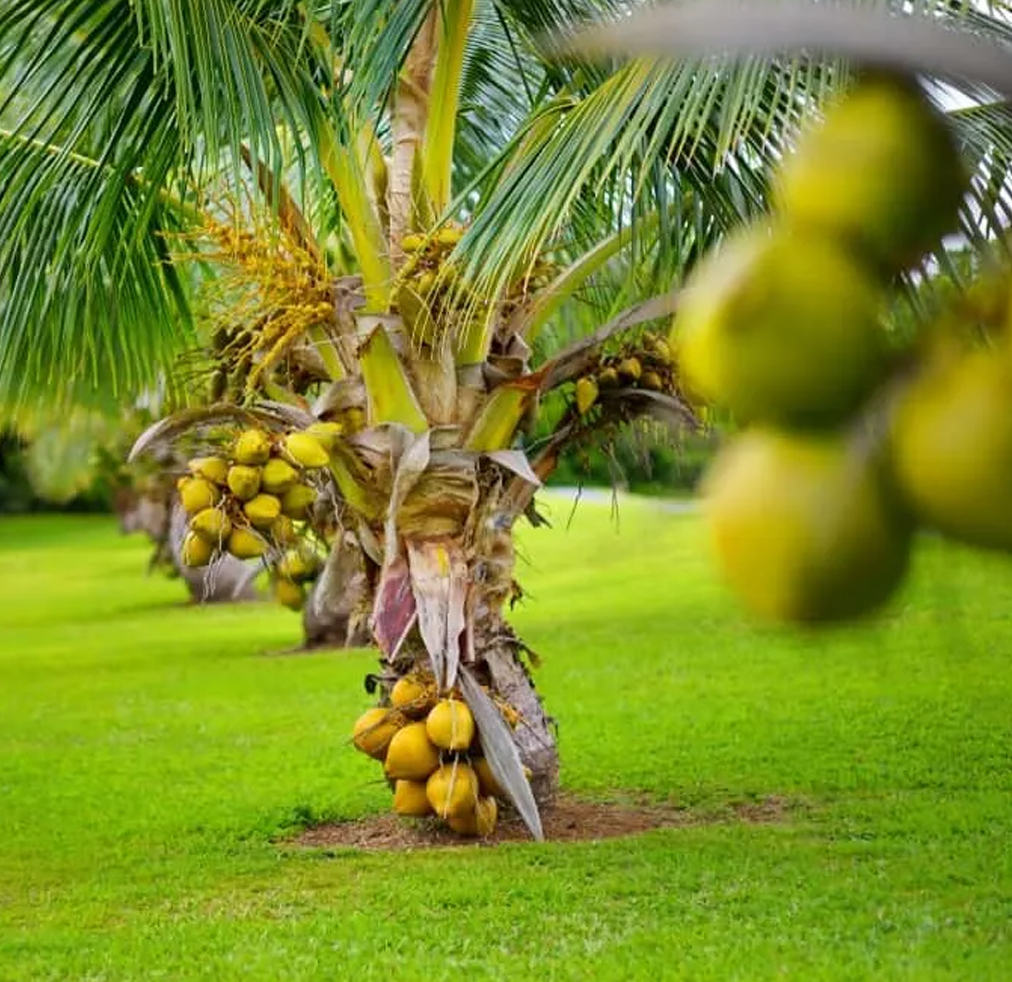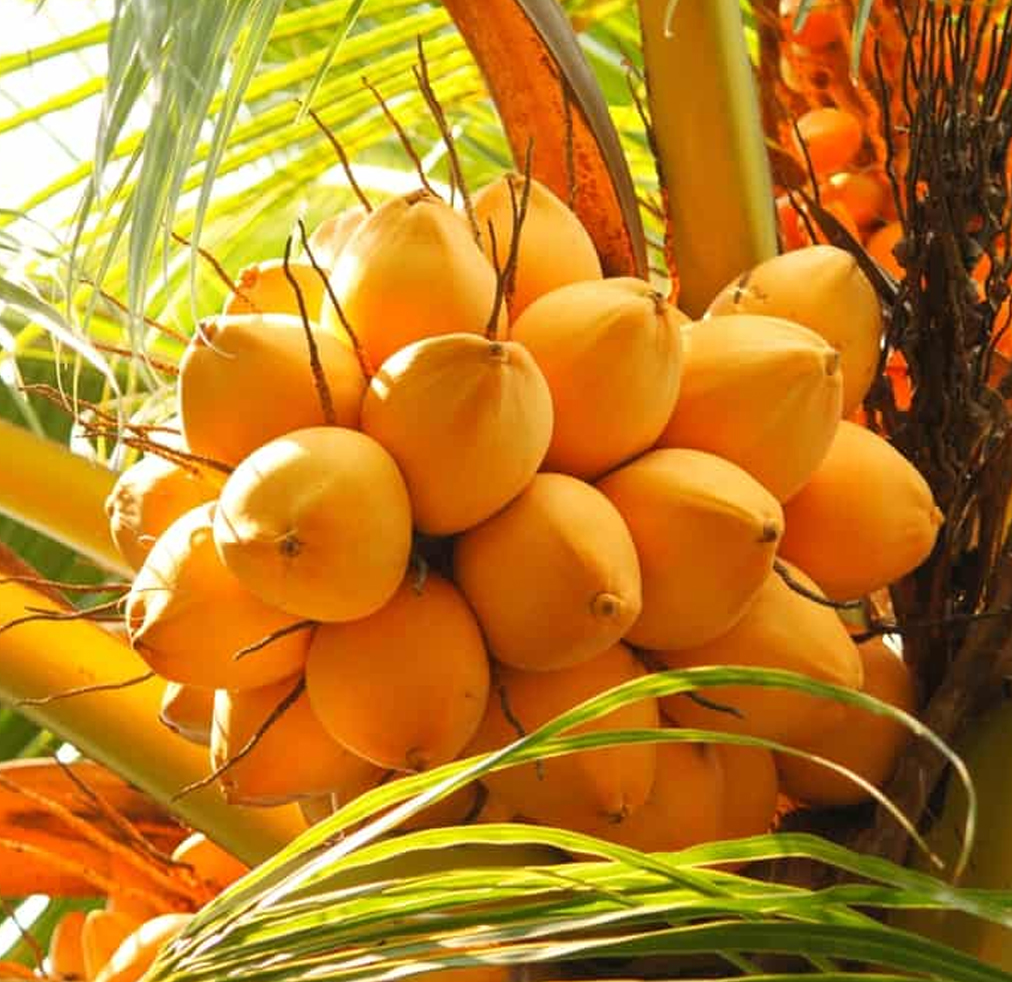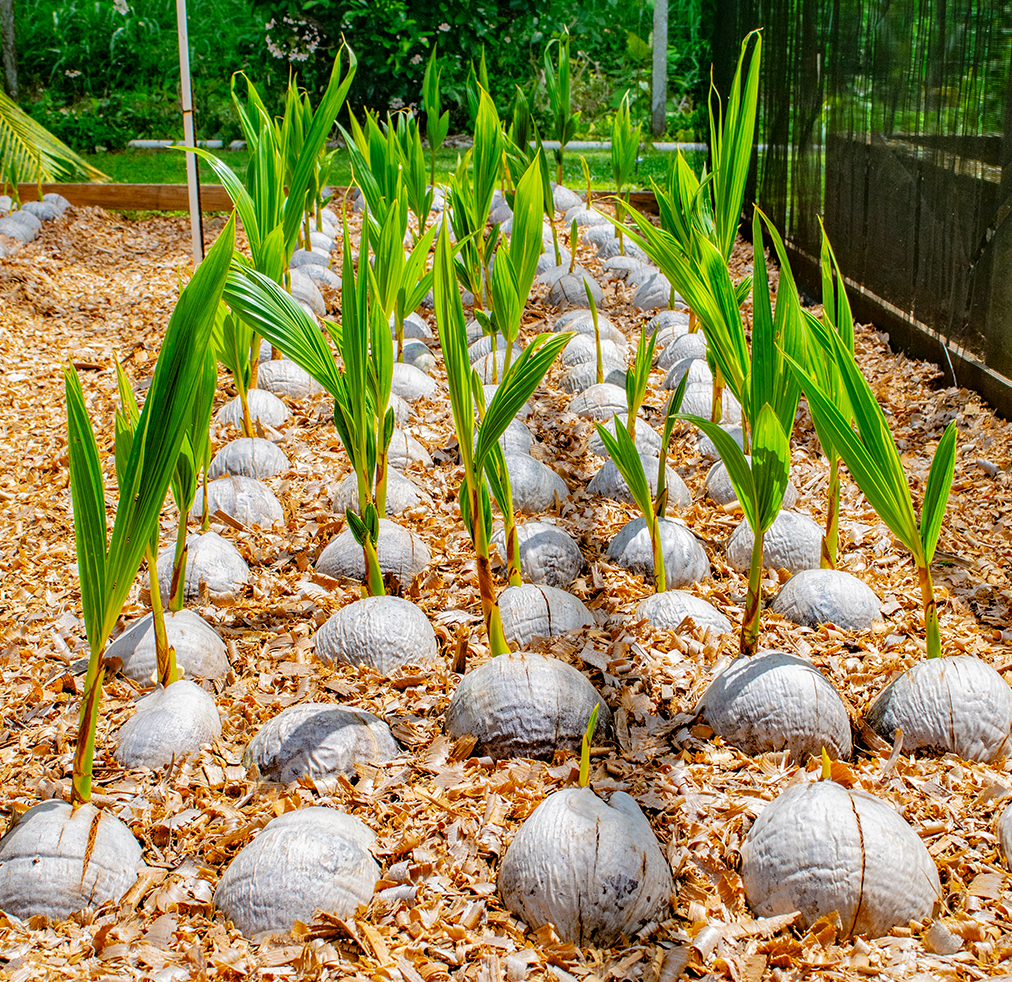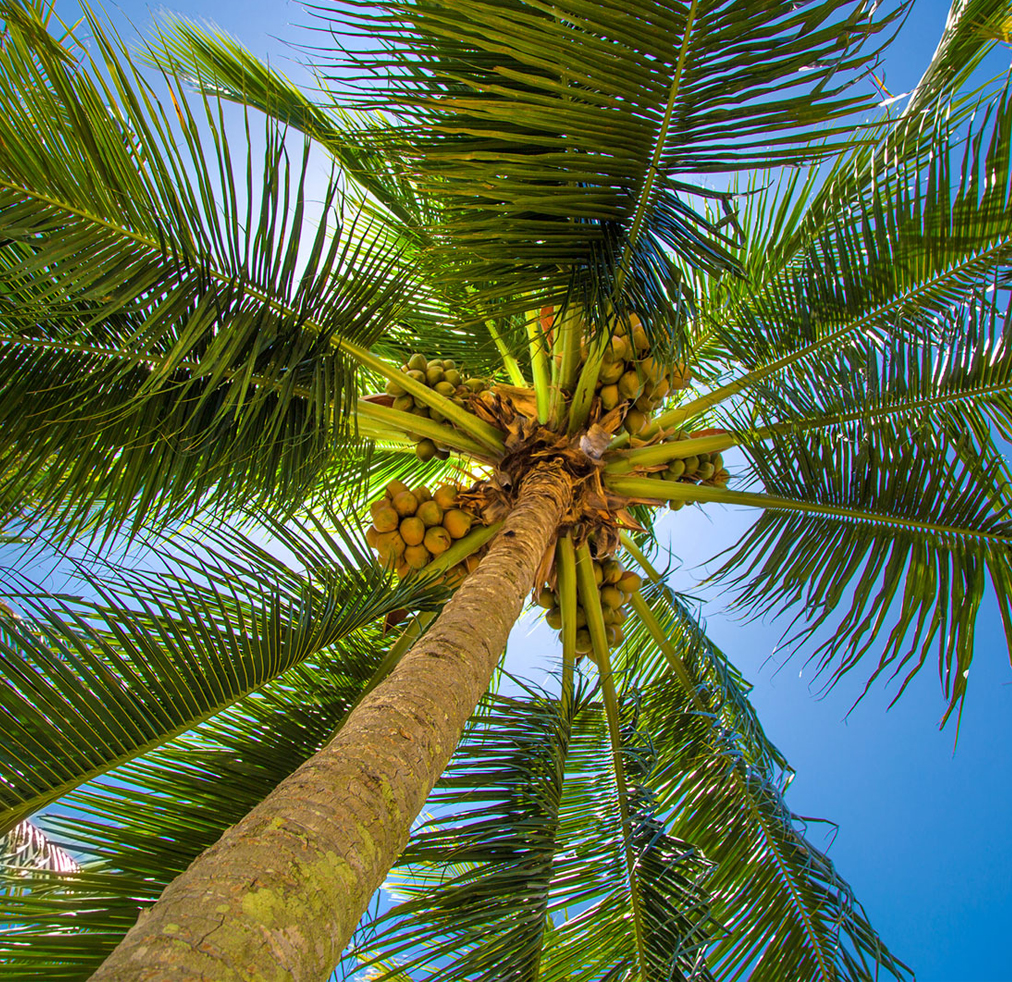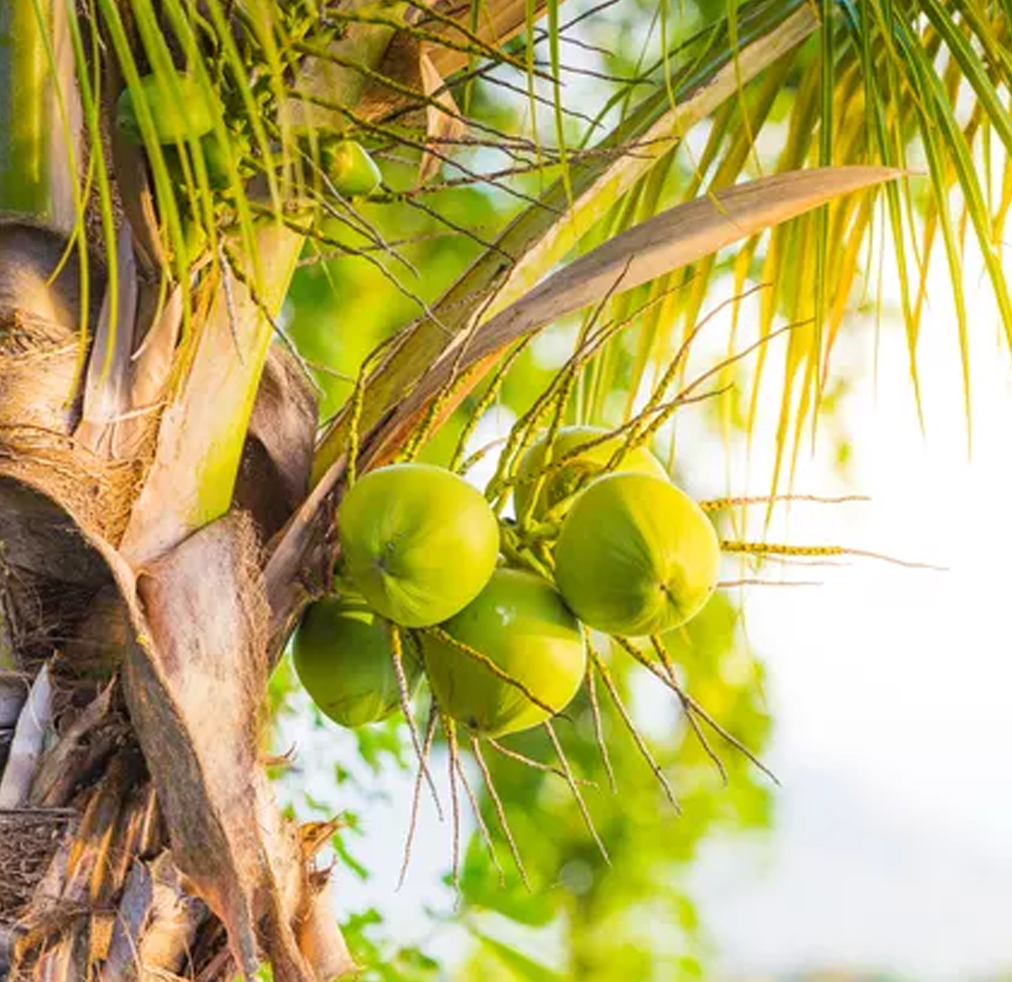Coconut Trees
Coconut Trees of the family Arecaceae, cultivated extensively in tropical areas for its edible fruit, the coconut. Coconut palms are found in tropical coastal areas nearly worldwide and probably originated somewhere in Indo-Malaya. They are the most economically important palm species, coconuts being one of the predominant crops of the tropics.
Physical description
The slender, leaning, ringed trunk of the coconut palm rises to a height of up to 25 metres (80 feet) from a swollen base and is surmounted by a graceful crown of giant featherlike leaves. Mature fruits, ovoid or ellipsoid in shape, 300–450 mm (12–18 inches) in length and 150–200 mm (6–8 inches) in diameter, have a thick fibrous husk surrounding the familiar single-seeded nut of commerce.
Cultivation
Coconut palms flourish best close to the sea on low-lying areas a few feet above high water where there is circulating groundwater and ample rainfall. Most of the world’s coconuts are produced on small native plantations. Propagation is by unhusked ripe nuts. These are laid on their sides close together in nursery beds and almost covered with soil.

